So obviously, the assayer is an oopsie-poopsie - but what about when there's NOT a simple tell? Roman, you scour eBay pretty often... Isn't it amazing how these "typical" last ~25 years or so fakes - messed up denticle/rim area, soft strike, fake tone, etc. - that Bob and the rest of us on CCF were calling out in the early 2010s STILL "pass" so often??!! Just as one would imagine, they now show up years later mixed into offerings of mostly genuine pieces... clearly people who were doing a good amount of eBay buying back then, or such collections bought by/consigned to larger eBay (re)sellers... and they almost always sell for the full price a genuine piece should bring.
Yes, date/assayer combination was the first flag. Edge is also present, but seems to have been constructed by a paired circle-rectangle punch. Overall a decent die transfer copy.
-Did you weigh the coin? If so, what was the weight?
-Was there any test to determine the silver fineness for the coin?
I agree that there is no question that the coin is a counterfeit. However, it seems the real question here is whether the coin could be a contemporary counterfeit. And if it is a contemporary counterfeit, does the coin still have some collector interest?
I don’t know… but it seems reasonable to look into whether it is a contemporary counterfeit.
Experience the World through Numismatics...it's more than you can imagine.
It is much more difficult to prove that a coin is a contemporary counterfeit than to prove that a coin is not genuine. Here is an example. This coin is not mine (I can't decide whether to buy it or not). Therefore, I can't show the edge or indicate its weight. The discrepancy between the date and the assayers' initials proves that the coin is not genuine. The greenish color of the coin indicates a low silver content (I think about .650-.700). I think that transfer dies were used to mint the coin. But I do not see a semicircular arc at the edge of the coin, which is typical for modern fake.
@genosse said:
It is much more difficult to prove that a coin is a contemporary counterfeit than to prove that a coin is not genuine. Here is an example. This coin is not mine (I can't decide whether to buy it or not). Therefore, I can't show the edge or indicate its weight. The discrepancy between the date and the assayers' initials proves that the coin is not genuine. The greenish color of the coin indicates a low silver content (I think about .650-.700). I think that transfer dies were used to mint the coin. But I do not see a semicircular arc at the edge of the coin, which is typical for modern fake.
I think the arc is there on the 1808 HJ but faint, especially at 1 o'clock to 3 o'clock on the obverse, which indicates edging after the strike. I would think that it is modern, I have rarely seen post strike edging on contemporary counterfeits.
Google Translate translated my post incorrectly and distorted my meaning. By a semicircular arc I mean what is shown in the photo below with arrows. This arc does not arise from the edging of the coin. It arises from the use of a transfer die, the diameter of which is smaller than the diameter of the coin blank.
@genosse said:
Google Translate translated my post incorrectly and distorted my meaning. By a semicircular arc I mean what is shown in the photo below with arrows. This arc does not arise from the edging of the coin. It arises from the use of a transfer die, the diameter of which is smaller than the diameter of the coin blank.
But that only happens in those cases when the blank is larger in diameter. It’s not typical for a transfer die.
I have typically seen people (i.e. Robert Gurney in the Unreal Reales) attribute those arcs to edging after striking the faces of the coin. I don't personally have evidence either way, I have avoided those types in my collection of counterfeits since most seem to consider them modern.
OK, so for anyone reading this thread... the coin @TwoKopeiki posted and the examples @genosse added are ALL definitively, not-up-for-debate, categorically stated modern fakes of a certain fabric. For those of us who are well-experienced with them, such pieces smack us in the face from across the room.
Simply work backwards and figure out their characteristics vs. those of genuine product from each mint/time-frame vs. various styles of contemporary counterfeits.
@threefifty said:
I have typically seen people (i.e. Robert Gurney in the Unreal Reales) attribute those arcs to edging after striking the faces of the coin. I don't personally have evidence either way, I have avoided those types in my collection of counterfeits since most seem to consider them modern.
The edging after striking on a modern fake gives the same result as the rimming process on a coin blank. That is, it raises the rim of the coin.
@threefifty said:
I have typically seen people (i.e. Robert Gurney in the Unreal Reales) attribute those arcs to edging after striking the faces of the coin. I don't personally have evidence either way, I have avoided those types in my collection of counterfeits since most seem to consider them modern.
A transfer die made from a coin with cut denticles will have such cut denticles.
And leave a mark on the coin in the form of a semicircular arc cutting off the denticles. Collectors are just lucky that the modern counterfeiters did not use a genuine coin with full denticles to make the transfer die.
Or have they already used one?
Comments
Always check the assayer!
This is a modern fake. Most likely, the coin was minted using a transfer dies from two different genuine coins.
Fac quod debes, fiat quod fiet
So obviously, the assayer is an oopsie-poopsie - but what about when there's NOT a simple tell? Roman, you scour eBay pretty often... Isn't it amazing how these "typical" last ~25 years or so fakes - messed up denticle/rim area, soft strike, fake tone, etc. - that Bob and the rest of us on CCF were calling out in the early 2010s STILL "pass" so often??!! Just as one would imagine, they now show up years later mixed into offerings of mostly genuine pieces... clearly people who were doing a good amount of eBay buying back then, or such collections bought by/consigned to larger eBay (re)sellers... and they almost always sell for the full price a genuine piece should bring.
SMH.
But hey, if we can just manage to convince Krause 20 years that an assayer magically DOES exist for the date... then it's fine!
Anyone want to post their 1776 MoFF 8R??!!
Yes, date/assayer combination was the first flag. Edge is also present, but seems to have been constructed by a paired circle-rectangle punch. Overall a decent die transfer copy.
@TwoKopeiki
I am curious about three issues:
-Did you weigh the coin? If so, what was the weight?
-Was there any test to determine the silver fineness for the coin?
I agree that there is no question that the coin is a counterfeit. However, it seems the real question here is whether the coin could be a contemporary counterfeit. And if it is a contemporary counterfeit, does the coin still have some collector interest?
I don’t know… but it seems reasonable to look into whether it is a contemporary counterfeit.
Experience the World through Numismatics...it's more than you can imagine.
It is much more difficult to prove that a coin is a contemporary counterfeit than to prove that a coin is not genuine. Here is an example. This coin is not mine (I can't decide whether to buy it or not). Therefore, I can't show the edge or indicate its weight. The discrepancy between the date and the assayers' initials proves that the coin is not genuine. The greenish color of the coin indicates a low silver content (I think about .650-.700). I think that transfer dies were used to mint the coin. But I do not see a semicircular arc at the edge of the coin, which is typical for modern fake.
Fac quod debes, fiat quod fiet
I think the arc is there on the 1808 HJ but faint, especially at 1 o'clock to 3 o'clock on the obverse, which indicates edging after the strike. I would think that it is modern, I have rarely seen post strike edging on contemporary counterfeits.
Google Translate translated my post incorrectly and distorted my meaning. By a semicircular arc I mean what is shown in the photo below with arrows. This arc does not arise from the edging of the coin. It arises from the use of a transfer die, the diameter of which is smaller than the diameter of the coin blank.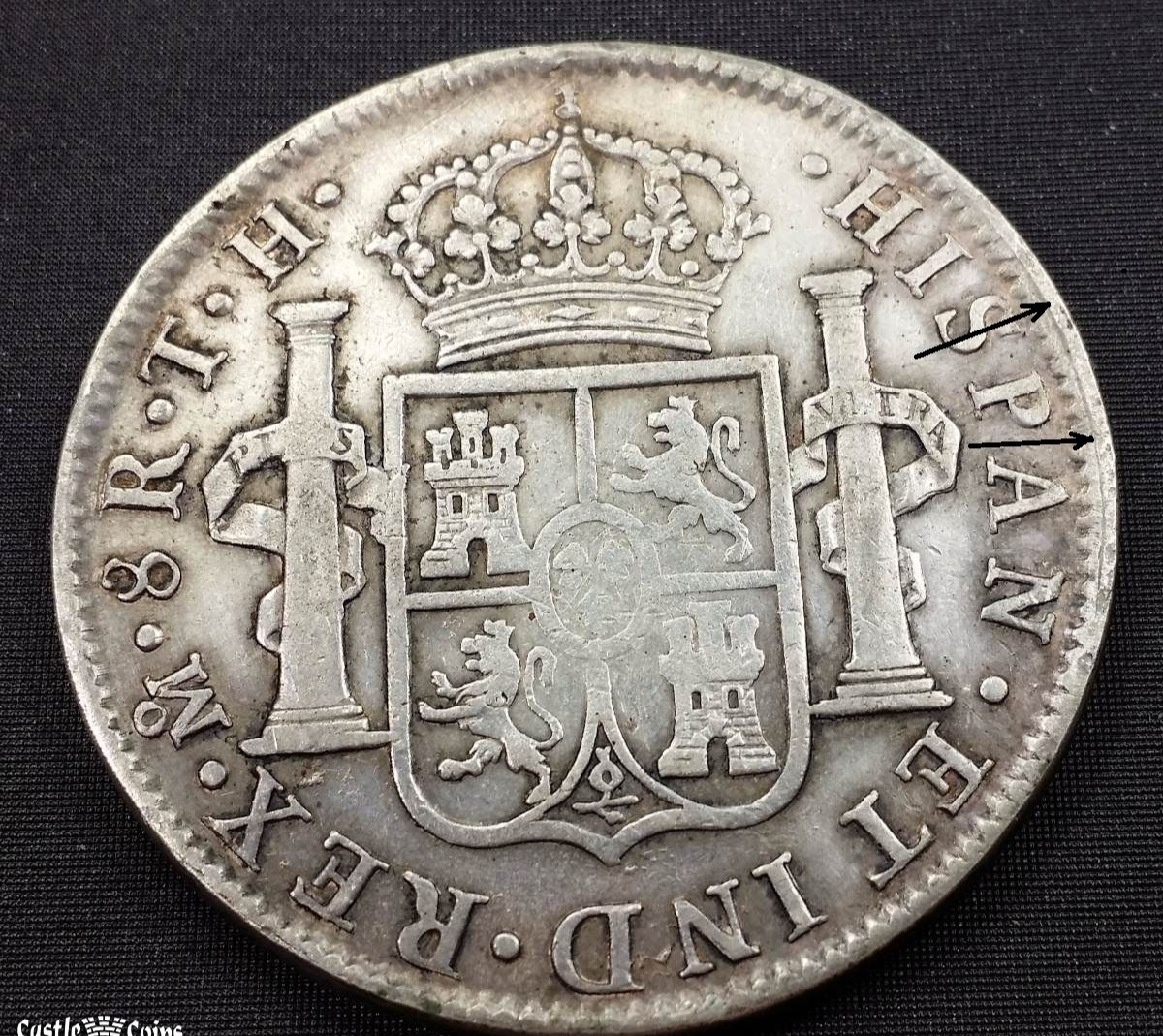
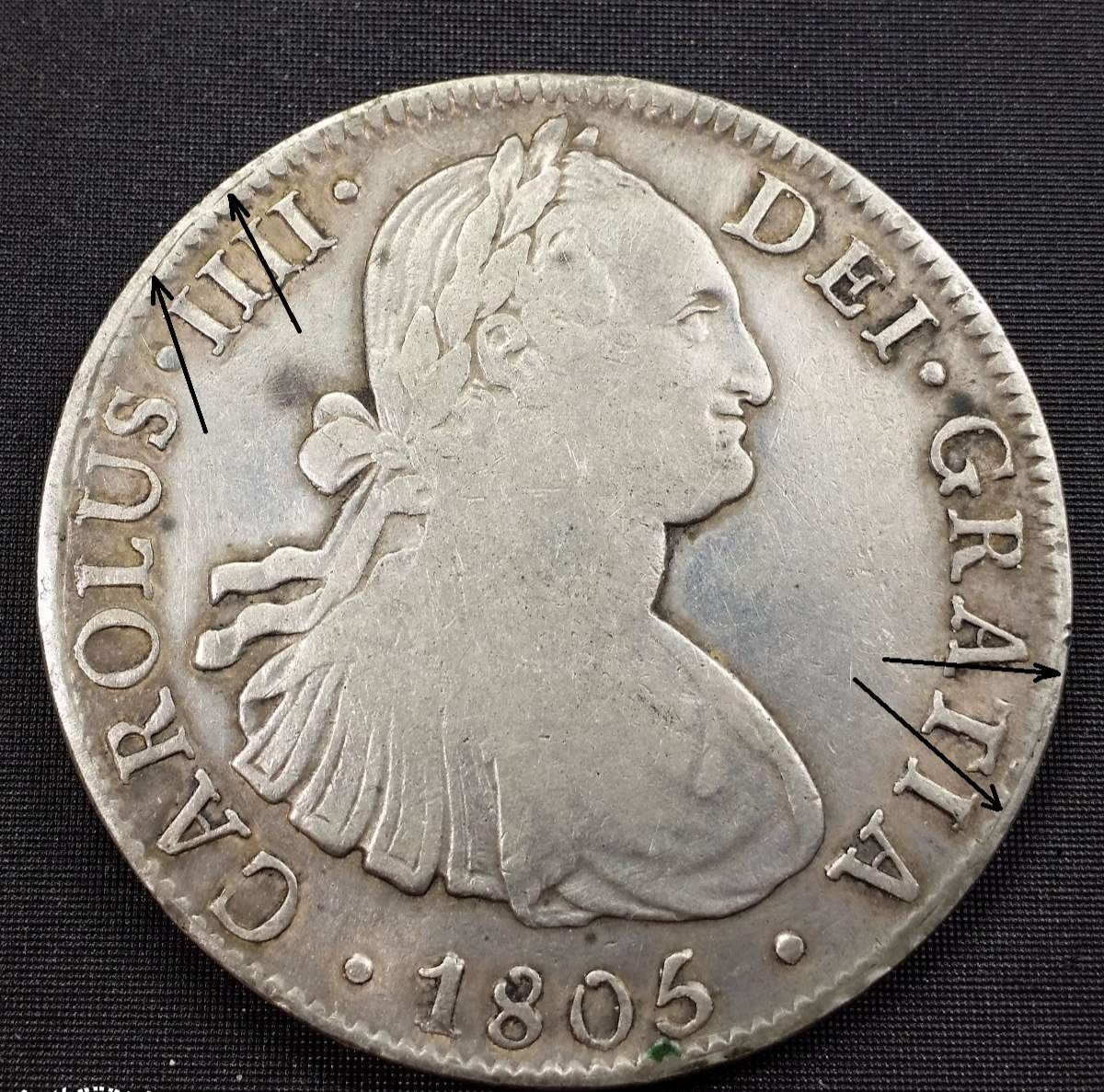
Fac quod debes, fiat quod fiet
But that only happens in those cases when the blank is larger in diameter. It’s not typical for a transfer die.
Gobrecht's Engraved Mature Head Large Cent Model
https://www.instagram.com/rexrarities/?hl=en
But that only happens in those cases when the blank is larger in diameter. It’s not typical for a transfer die.
This may not be typical for a transfer die, but there are a large number of modern fakes with such a characteristic semicircular arc.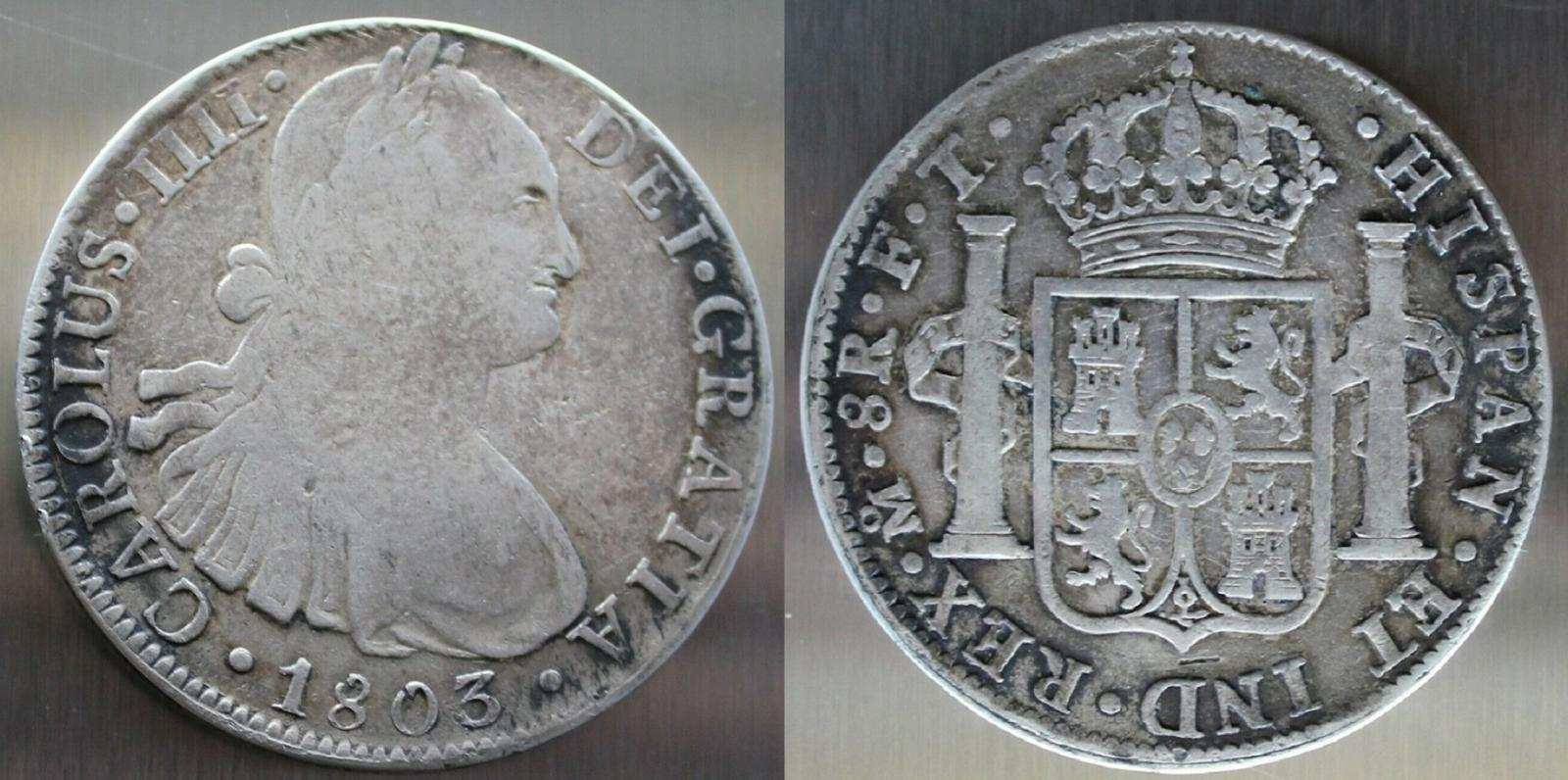
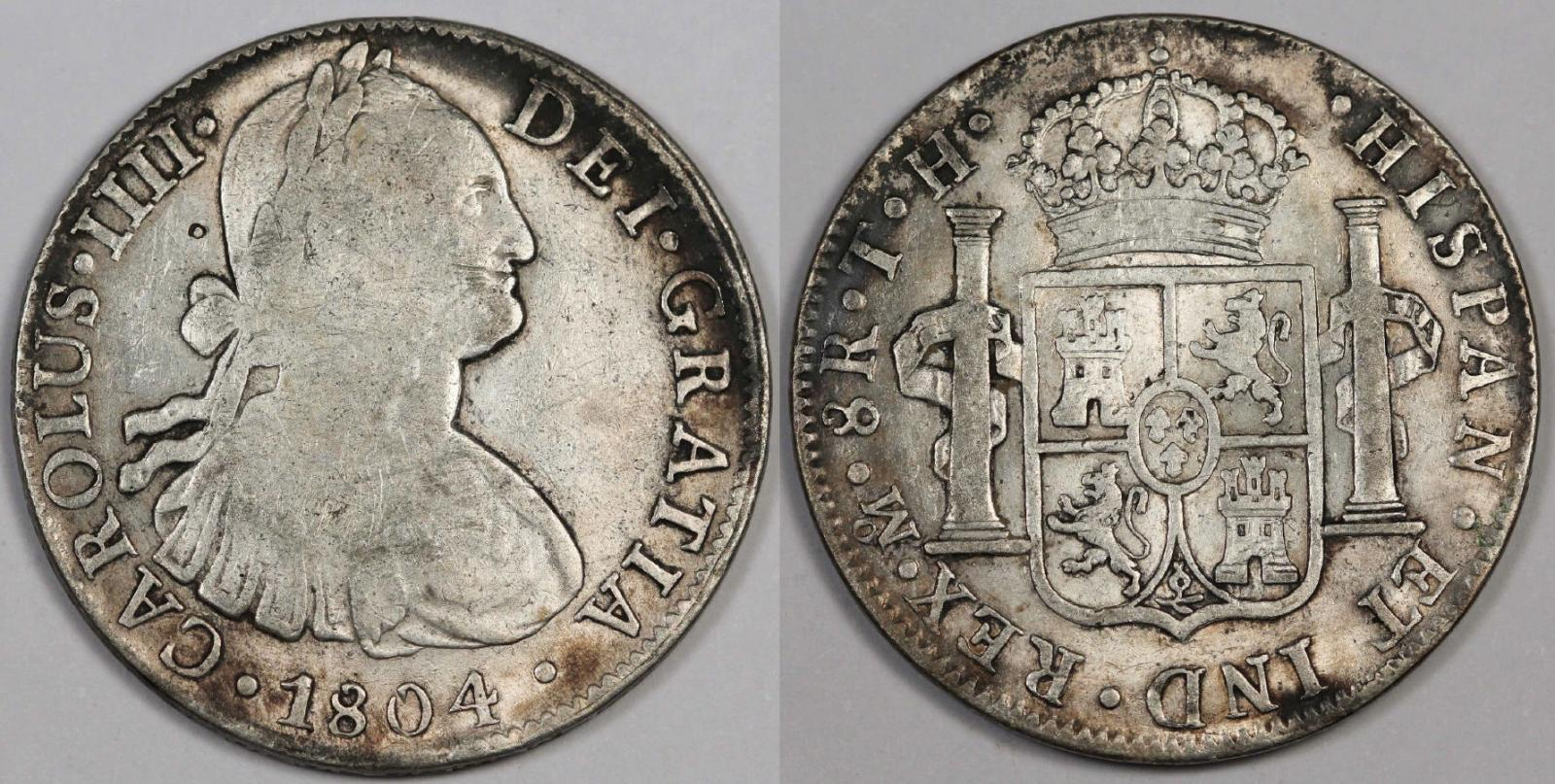
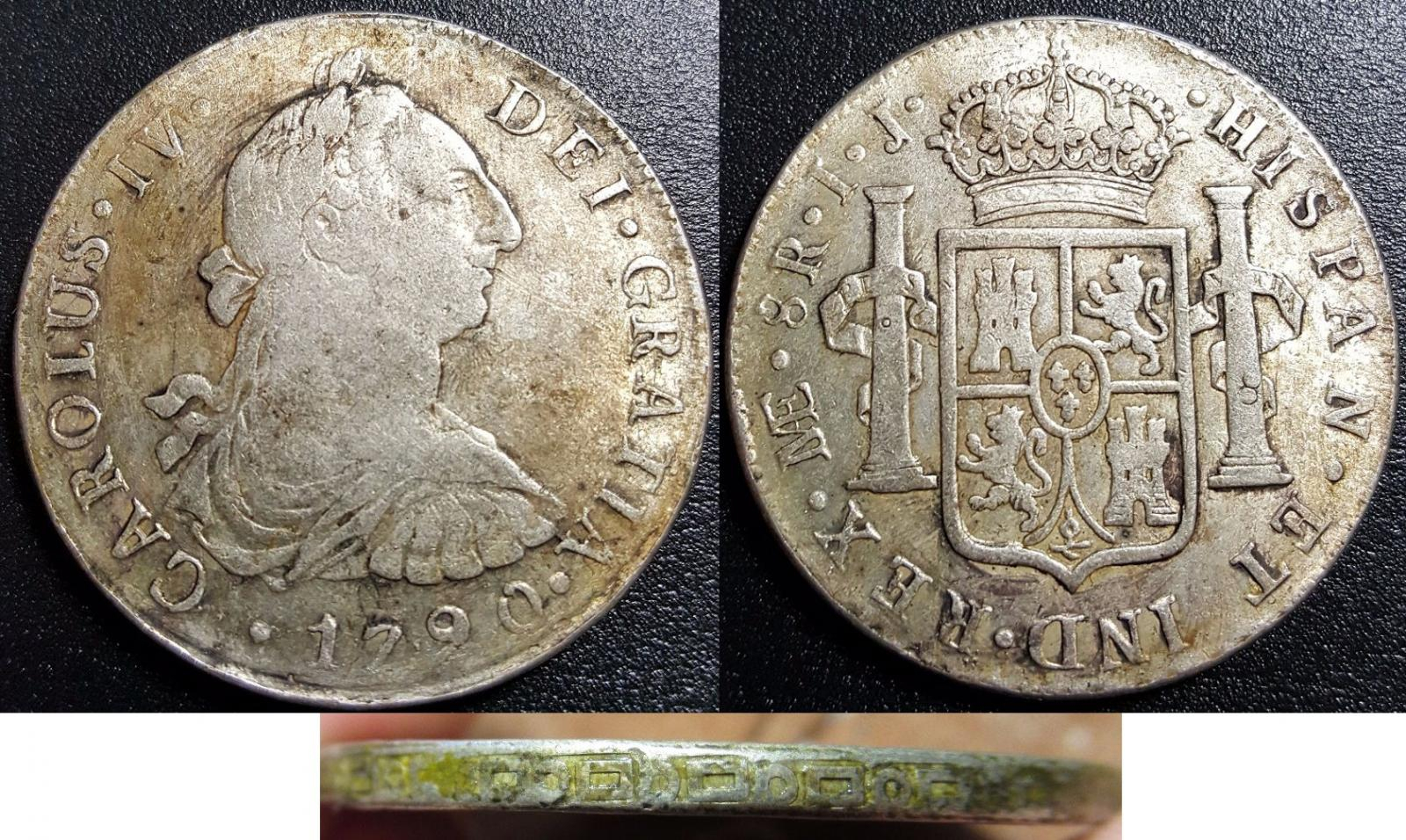
Fac quod debes, fiat quod fiet
I have typically seen people (i.e. Robert Gurney in the Unreal Reales) attribute those arcs to edging after striking the faces of the coin. I don't personally have evidence either way, I have avoided those types in my collection of counterfeits since most seem to consider them modern.
OK, so for anyone reading this thread... the coin @TwoKopeiki posted and the examples @genosse added are ALL definitively, not-up-for-debate, categorically stated modern fakes of a certain fabric. For those of us who are well-experienced with them, such pieces smack us in the face from across the room.
Simply work backwards and figure out their characteristics vs. those of genuine product from each mint/time-frame vs. various styles of contemporary counterfeits.
Same reverse... even dumberer muling:
The edging after striking on a modern fake gives the same result as the rimming process on a coin blank. That is, it raises the rim of the coin.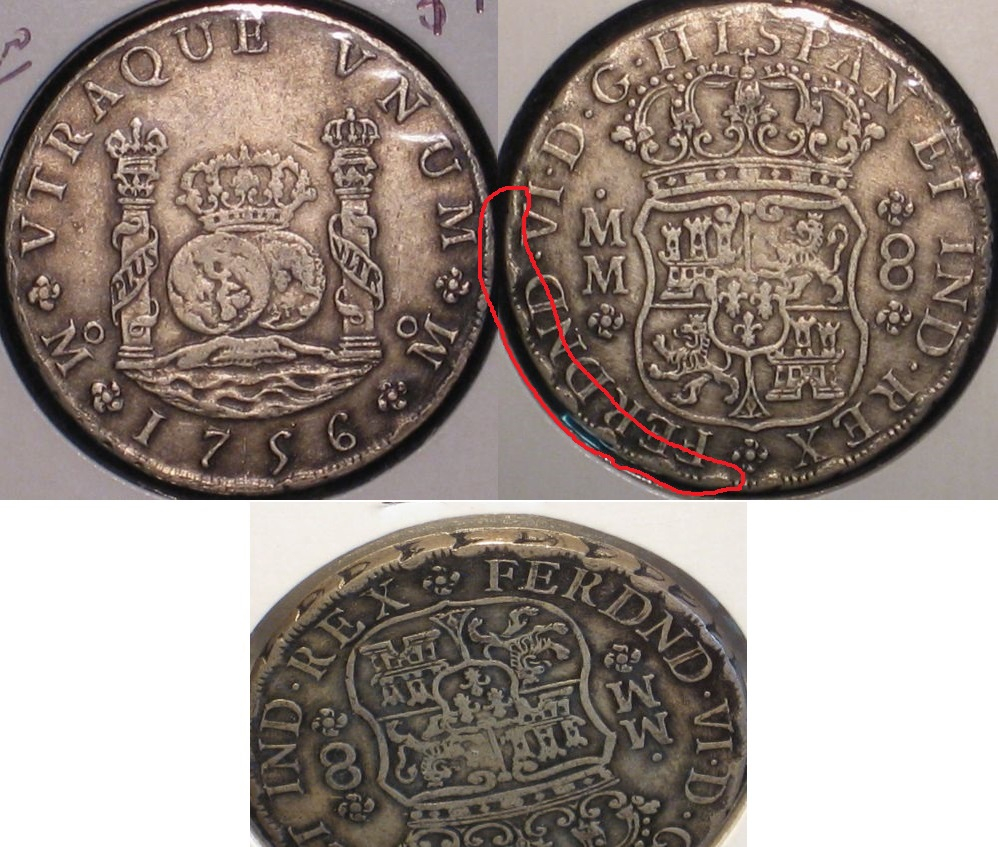
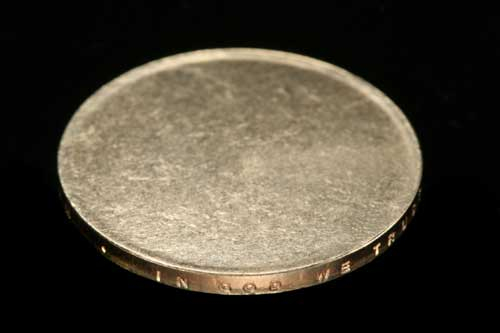
Fac quod debes, fiat quod fiet
A transfer die made from a coin with cut denticles will have such cut denticles.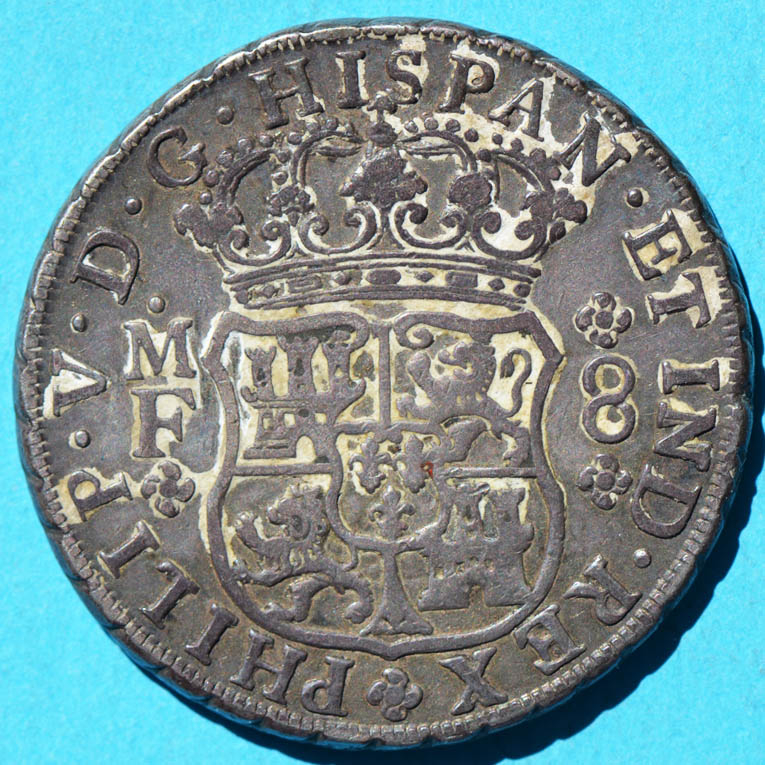
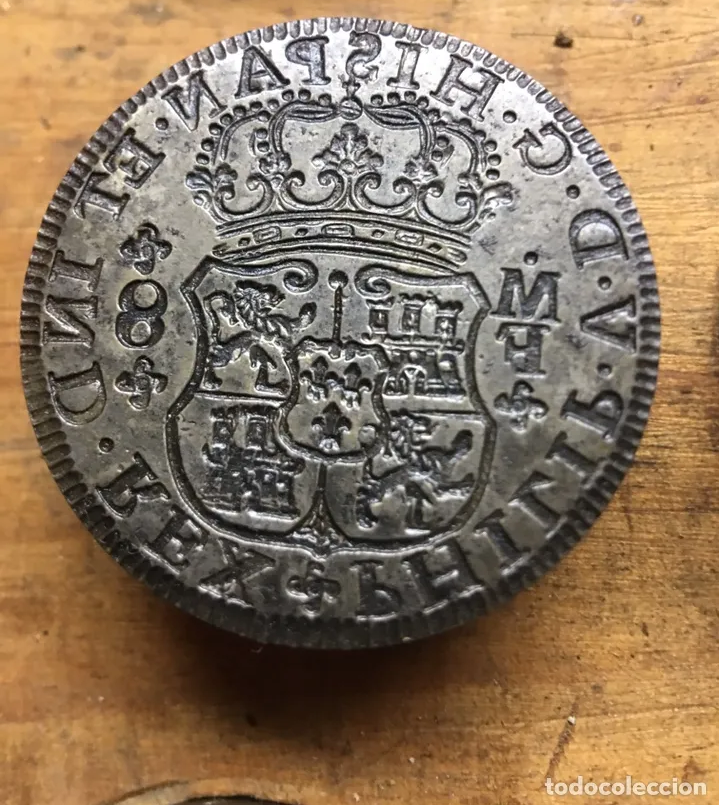
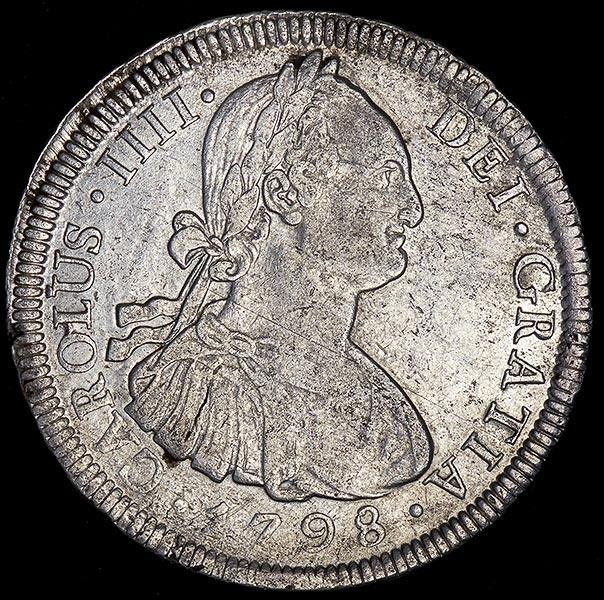
And leave a mark on the coin in the form of a semicircular arc cutting off the denticles. Collectors are just lucky that the modern counterfeiters did not use a genuine coin with full denticles to make the transfer die.
Or have they already used one?
Fac quod debes, fiat quod fiet